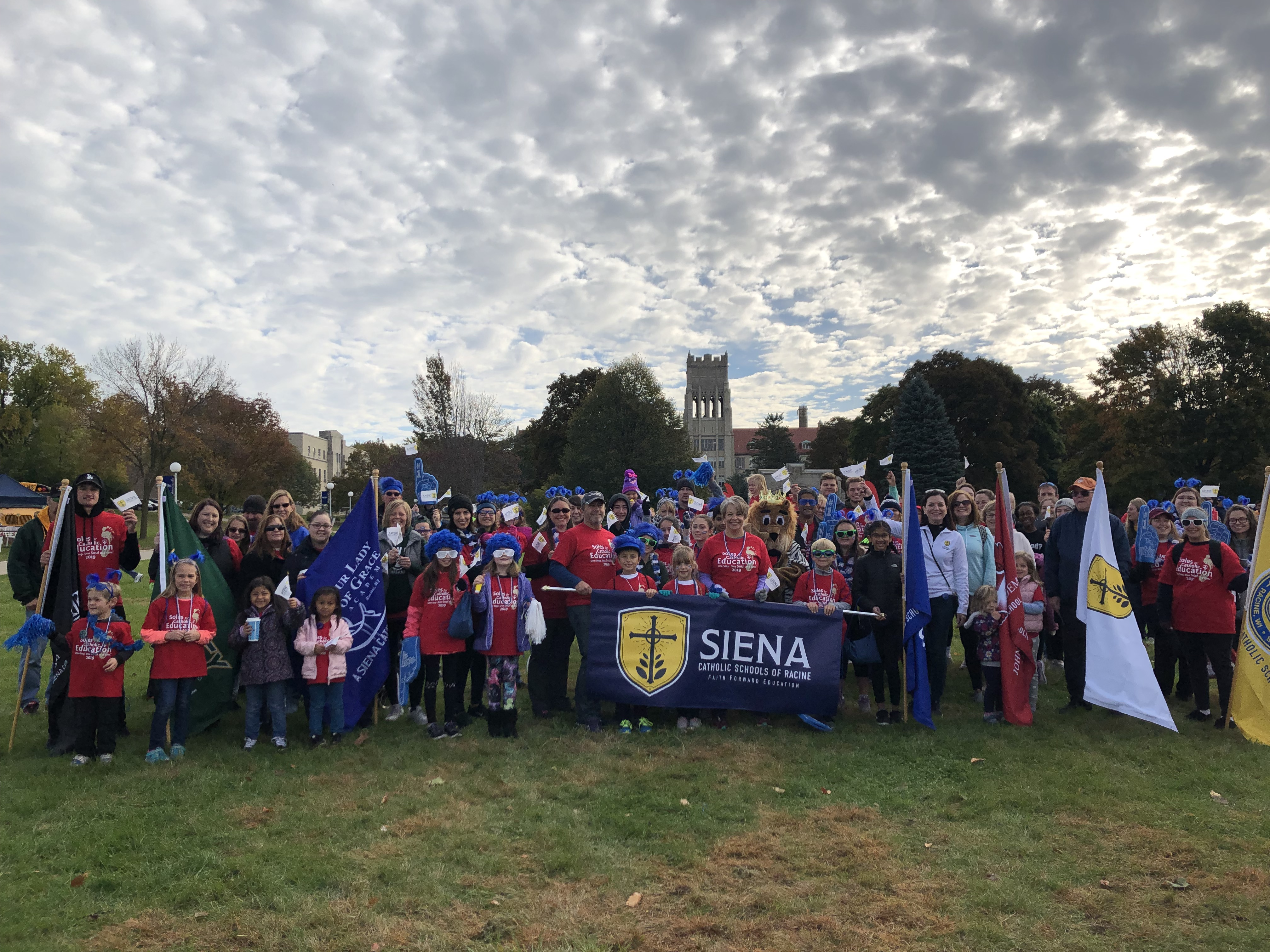For many years now the story has been that Catholic education is on the decline. From the mid-1960s to 2012, the number of Catholic schools fell from 13,000 to 7,000. In the 1960s Catholic schools educated about 13% of the school-age population, but by 2012 that number was less than half at 5%. So how is it that a Catholic school network in Racine, Wisconsin is not only surviving but growing and thriving?
According to the president of the Siena Catholic Schools of Racine, Brenda White, it’s all thanks to the vision provided by Archbishop Jerome Listecki, with some help from the Racine Parental Choice Program.
“Creating the Siena system really came as a call from Archbishop Listecki to the parishes in Racine back in 2010,” said White. “Years of planning with the Archdiocese and numerous community leaders brought us to where we are.”
In 2017, the Archbishop met with all of the pastors and trustees of the parishes in Racine and approved a vision of Catholic education that would be “affordable, accessible, and sustainable.”

Listecki’s vision was this: Instead of maintaining six separate Catholic schools supported by different parishes or Catholic orders, Siena would be a network of Catholic schools that pool resources and have centralized leadership and curriculum. Today there are five kindergarten-through-eighth-grade schools and one seventh-through-twelfth-grade school supported by 10 parishes. If a student attends a Siena school in kindergarten they can continue through their senior year of high school.
While Listecki’s vision preceded the creation of the Racine Parental Choice Program (RPCP), school choice has really helped bring his vision to fruition by increasing affordability and accessibility.
“When the RPCP was created it was a way of allowing anyone to access a Catholic education without tuition being a barrier,” said White. Today, of the 1,600 students in the network,78% are in the parental choice program.
The RPCP covers 100% of tuition for students K4–8 whose families meet the income requirements. For instance, if a single-parent family of three makes $63,990 or less, they qualify and if a married-parent family of three makes $70,990 or less they qualify, and the cap varies per the number of family members.

The choice program has increased the diversity of the students and families Siena serves. According to White, “RPCP serves as a way to broaden the opportunities for people who value religious education for their children. Our schools serve a more diverse group of students than they have in the past because of choice.”
By coming together as one entity, Siena has been able to share resources and accomplish things the individual parish schools wouldn’t have been able to otherwise. For instance, last year the system was able to pool their title funds in order to help a cohort of teachers work toward advanced reading licensure. This, in turn, will help raise literacy rates across the network.
Another key ingredient in making Siena sustainable has been the massive amount of community support the network has received.
“As a startup organization, we were very blessed to have key influential Catholic leaders on our board such as Dan Horton, who is a former administrator for S.C. Johnson. And goodness attracts goodness.”
Siena sought to have diversity on the board. “We want our board to reflect Racine,” White said. “So we tried really hard to recruit minorities, to truly have a voice and a buy-in, not only from our Catholic community but from the city.”
Siena Catholic Schools officially came under one umbrella at the beginning of the 2018–19 school year and are already outperforming the Racine Unified School District by 6.7 points overall according to the Department of Public Instruction’s accountability ratings. “We asked ourselves, ‘What do the test scores tell us about how we can improve instruction?’ But then we also looked at what other programmatic things we can add that give kids additional opportunities.”
But at Siena, the end goal of educating students is not just better test scores but giving them the tools to be quality members of the community. “We want academic excellence, but we also want strength in faith formation and service.” White said.
The Siena model has attracted a lot of attention. U.S. Rep. Bryan Steil of Wisconsin spoke at Tuesday’s National School Choice rally in Madison about his visit to St. Catherine’s last fall. “I met a young man at St. Catherine’s, receiving a world-class education who will be graduating this year, thanks to Racine’s school choice program.”
Siena’s focus on the combination of academic excellence and faith has also brought many donors to the network.
“People see the future of Racine in our students. You’re really investing in the future of communities, and the difference Siena Catholic Schools can make in a child’s life on the holistic side. Not only focusing on their academic growth but also on their moral development.”
Cori Petersen is a writer and research analyst at the Wisconsin Institute for Law & Liberty. Reposted with permission.


